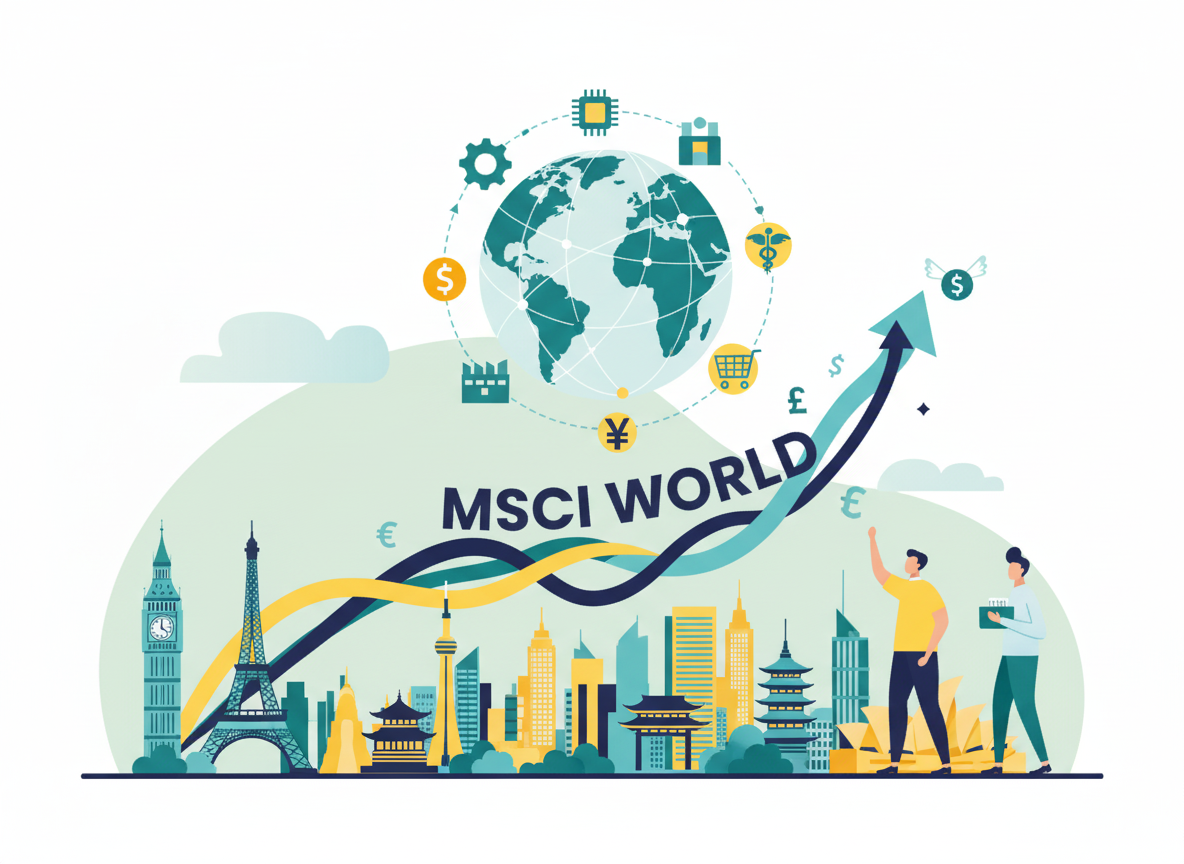Cast an eye over the ticker tapes of the world’s bourses, from New York to Frankfurt to Tokyo, and the effect is dizzying. A riot of numbers, blinking arrows and arcane three-letter symbols paint a picture of global capitalism in all its chaotic, creative glory. For any investor trying to gauge the direction of the wind, let alone chart a course, the sheer volume of information can be overwhelming. How can one possibly know if the tide is rising across the globe, or if a handful of buoyant stocks are merely masking a treacherous undertow?
For decades, the answer has been to consult a single, deceptively simple number. The MSCI World index is the financial world’s great barometer. It aims to measure the health and performance of the planet’s richest economies by tracking a vast basket of their largest publicly traded companies. For legions of pension-fund managers, professional investors and even armchair speculators, it has become the definitive benchmark for the global stockmarket. To beat the index is to succeed; to lag it is to fail. Its fluctuations are, for many, a proxy for the very pulse of global commerce.
A weighty matter
At its core, the index is a feat of aggregation. Maintained by MSCI, a financial-data firm, it scoops up around 1,500 of the biggest firms from 23 developed countries. But this is no democracy. A company’s influence on the index is determined by its market capitalisation—the total value of its traded shares. The result is that giants like Apple, Microsoft and Nvidia wield enormous clout, their daily wobbles causing ripples across the entire index. In contrast, the largest firm in, say, Portugal, has a voice that is barely a whisper.
This methodology has a profound consequence: the MSCI World is, by and large, a story about America. So dominant are its corporate titans that American firms now account for roughly 70% of the index’s total value. The next largest country, Japan, makes up a mere 6%. An investor buying a fund that tracks the MSCI World may think they are purchasing a balanced slice of the global economy, but in reality, they are making a very large bet on Wall Street, and an even more concentrated one on a handful of its technology darlings.
This American accent is also the source of the index’s main critique. By limiting itself to the “developed” world, it turns a blind eye to the burgeoning economies of China, India, Brazil and other so-called emerging markets. These are precisely the places where much of the world’s future growth is expected to lie. To capture them, an investor must turn to a broader benchmark, such as the MSCI All-Country World Index (ACWI). The World index, critics lament, offers a view of the planet that is already somewhat dated. Furthermore, its reliance on market capitalisation means it is fated to buy high and sell low: as a company’s stock soars it gains more weight, forcing index-tracking funds to buy more of it, potentially inflating bubbles. It is a snapshot of what is already popular, not necessarily what is prudent.
The triumph of the tracker
Despite these quibbles, the index’s influence is more pernicious than ever. Its rise has coincided with the boom in passive investing. Trillions of dollars in exchange-traded funds (ETFs) and index trackers are now programmed to slavishly mimic its composition. This has turned the index from a simple measuring stick into a powerful force in its own right. When MSCI periodically rebalances its components—adding or removing firms to reflect their changing fortunes—it forces these passive funds to buy or sell shares in tandem, sending billions of dollars cascading through the market.
For all its imperfections, the MSCI World index provides an invaluable service. It offers a clear, if flawed, lens through which to view the grand sweep of global markets. It is the benchmark against which active fund managers, with their high fees and bold promises, must be judged—and by which they are often found wanting. For now, it remains the closest thing investors have to a planetary health check. But as the world’s economic centre of gravity continues its slow, inexorable shift eastward, one must wonder how long its particular map of the world will remain quite so dominant.
